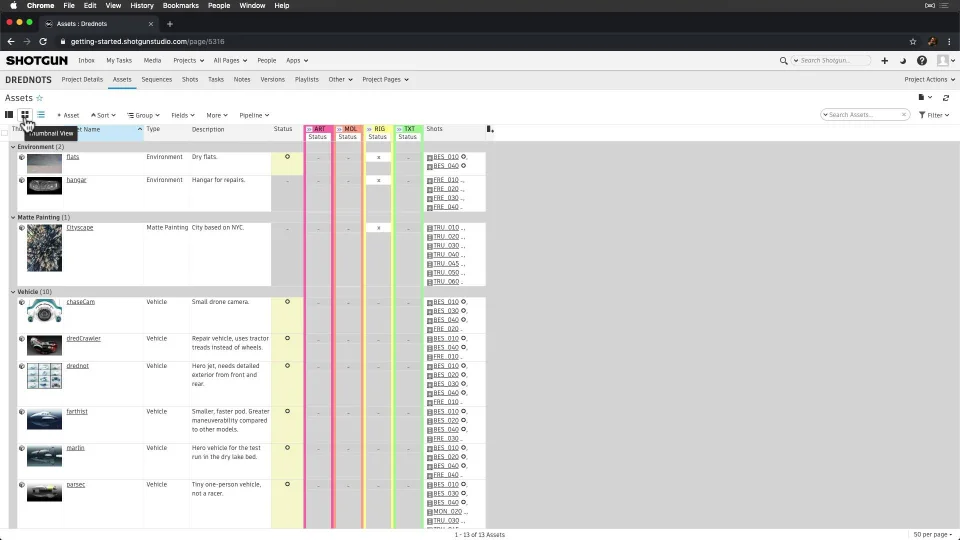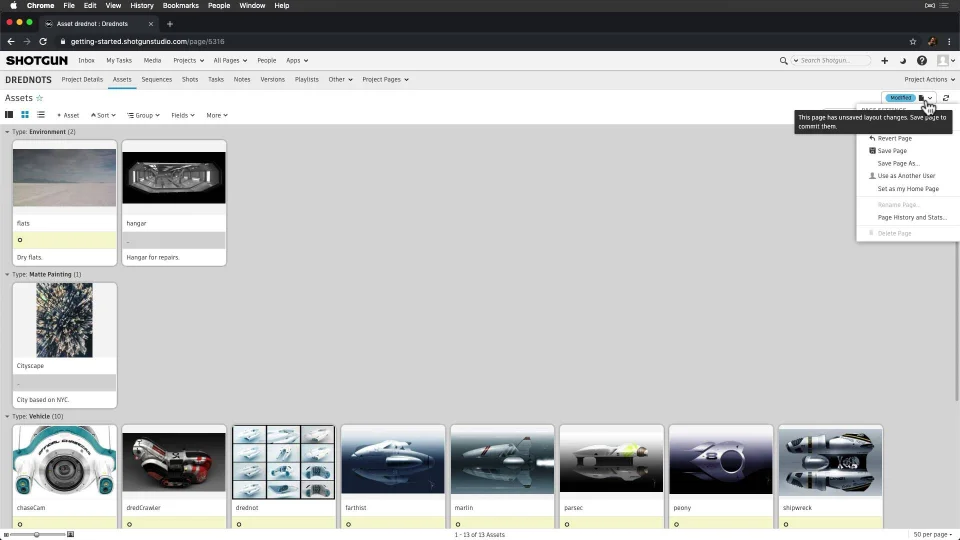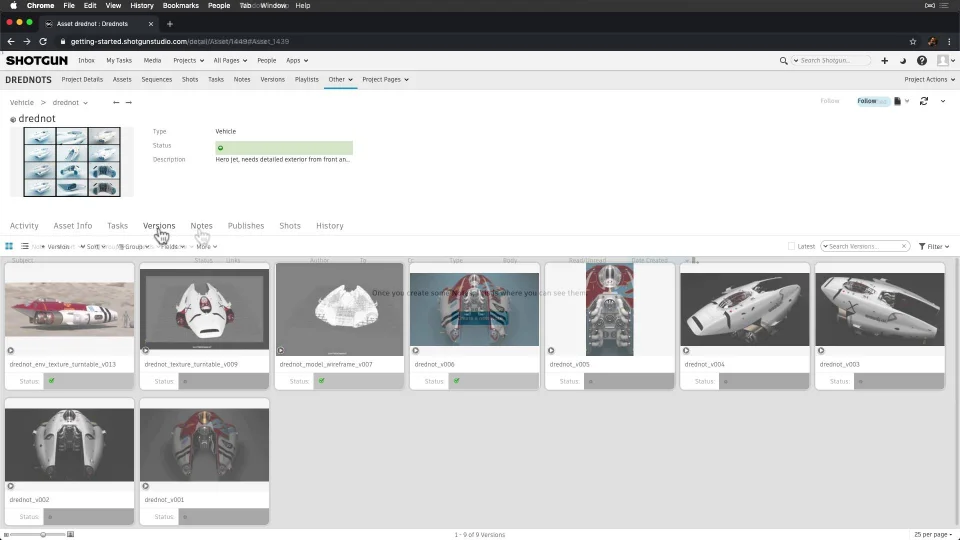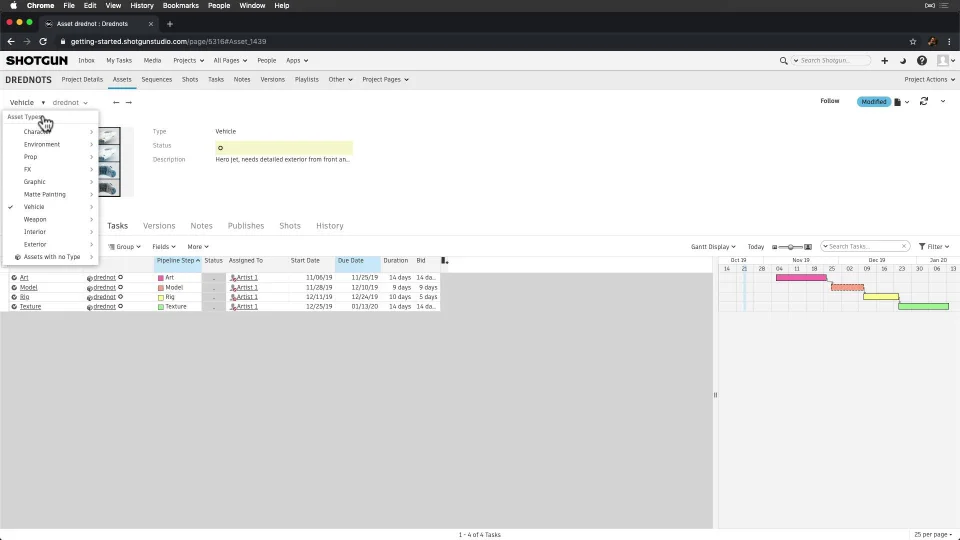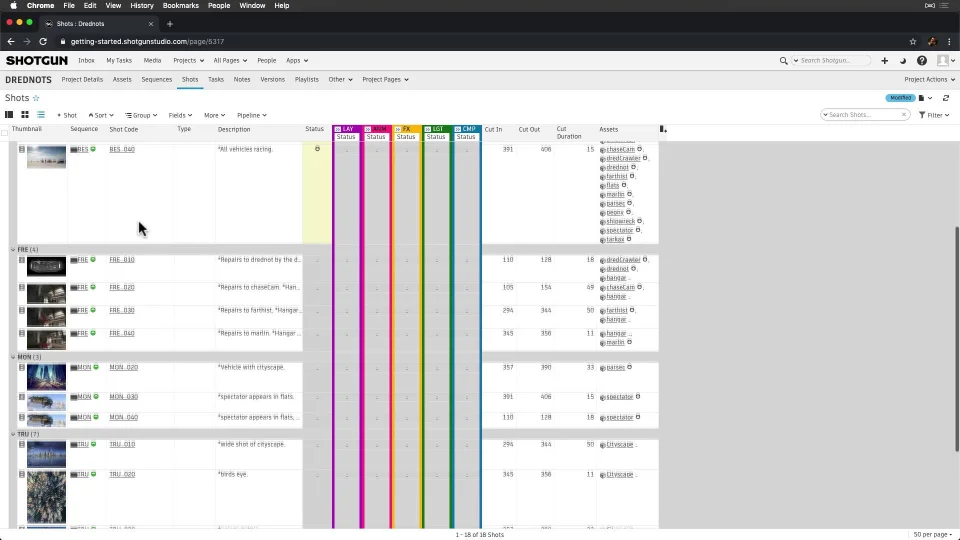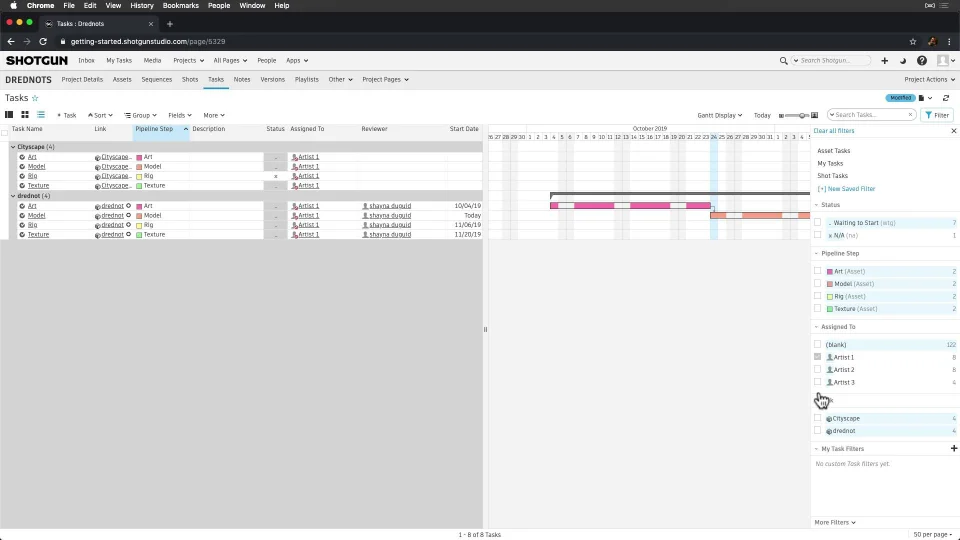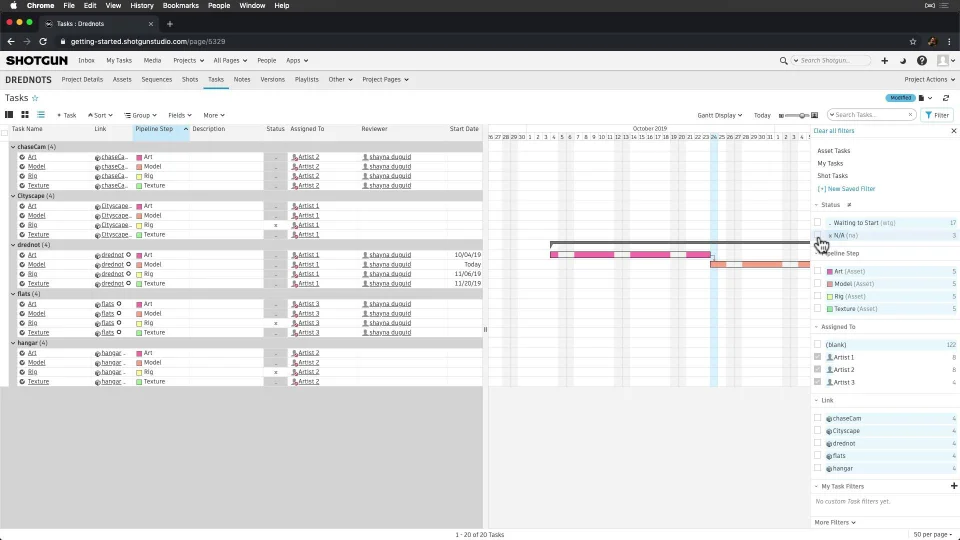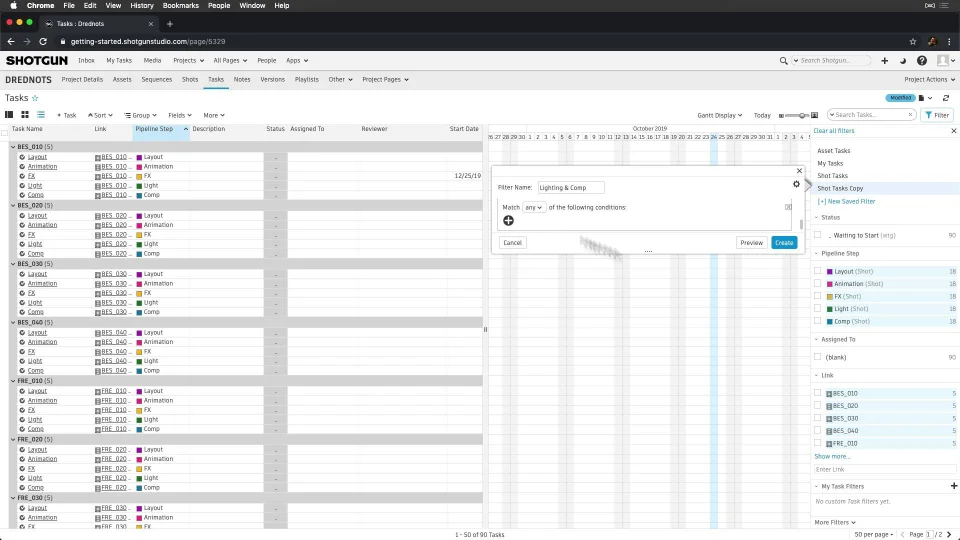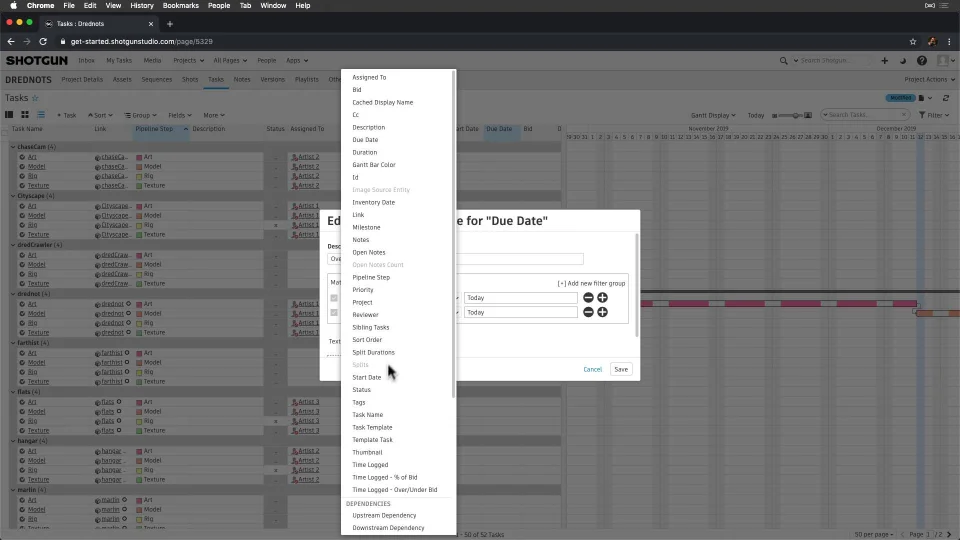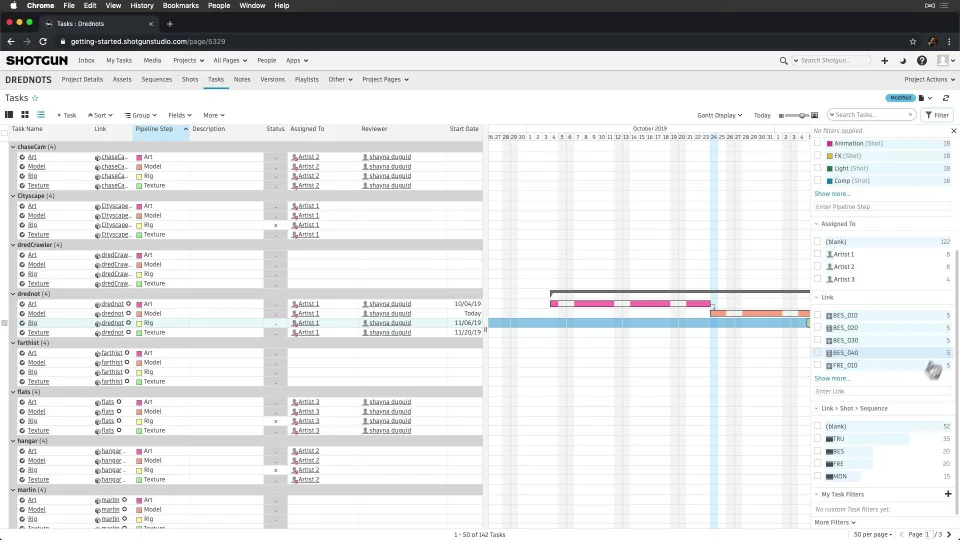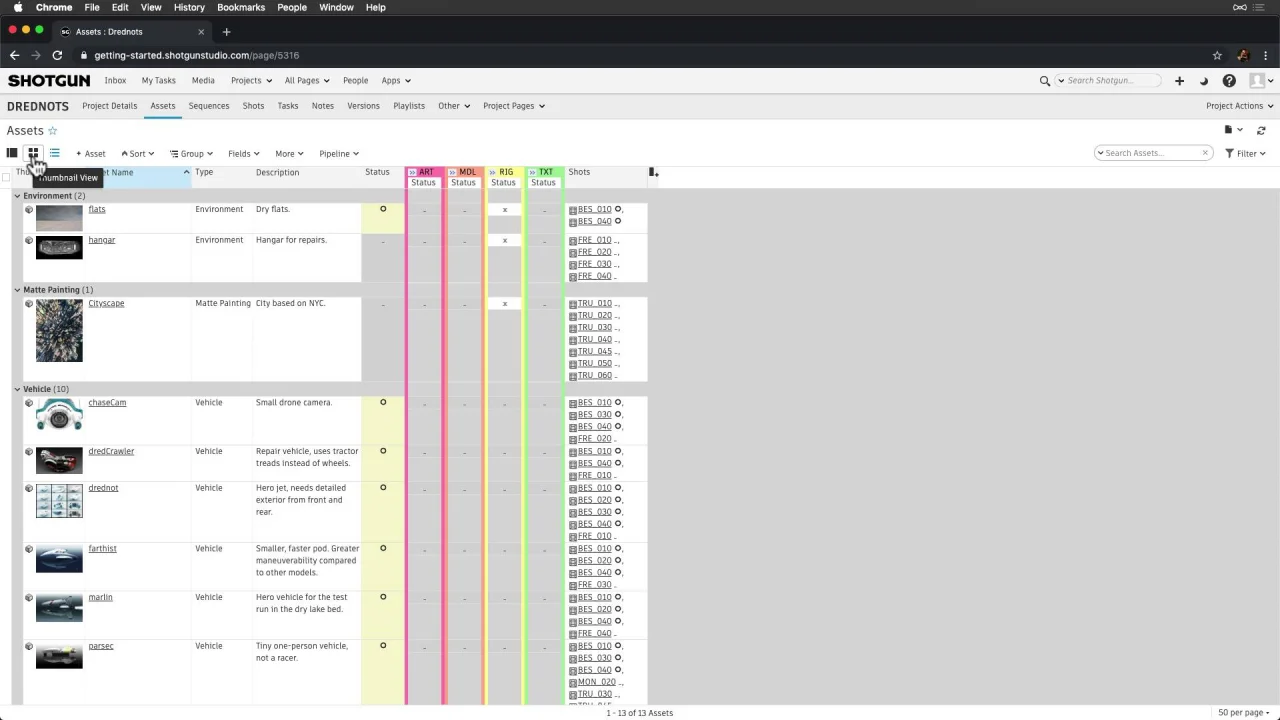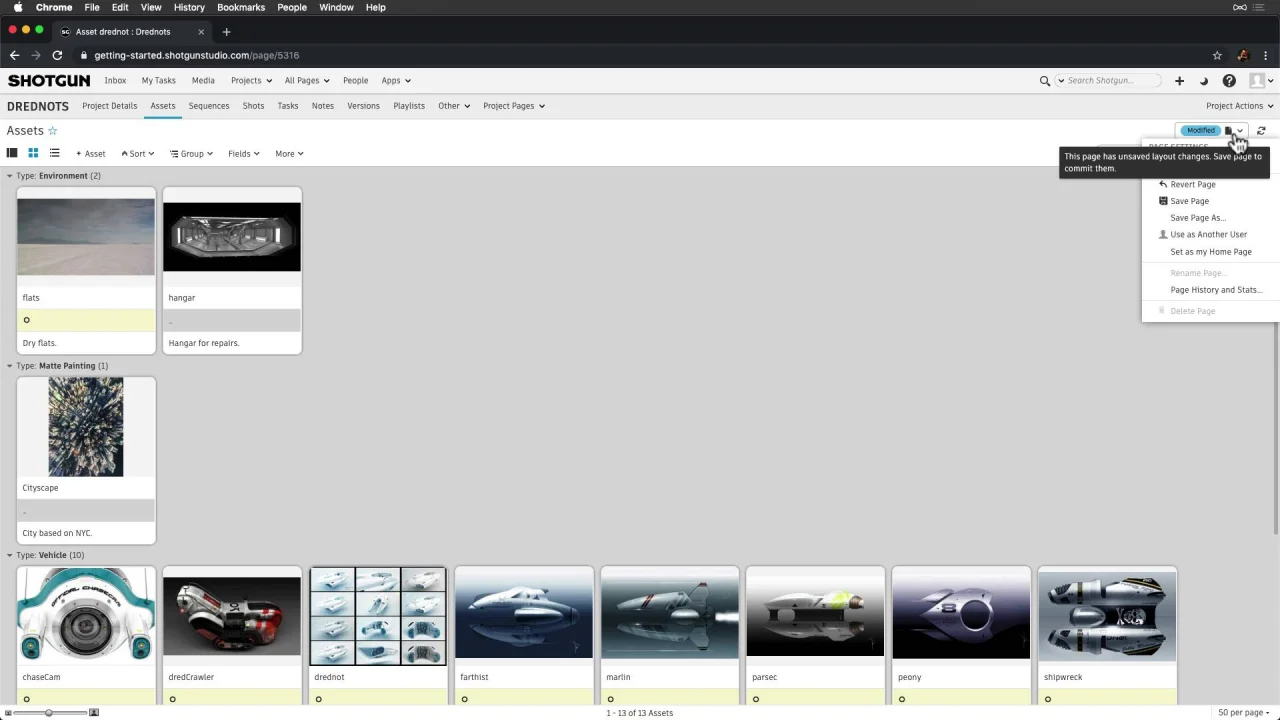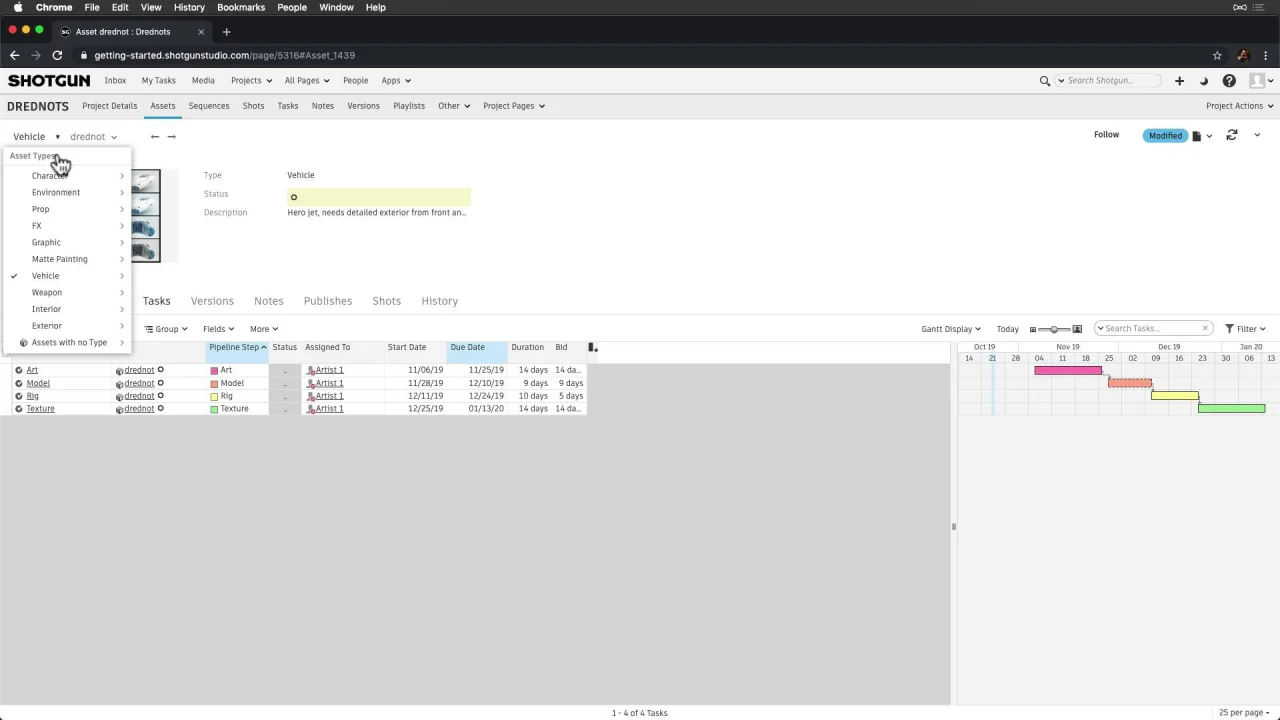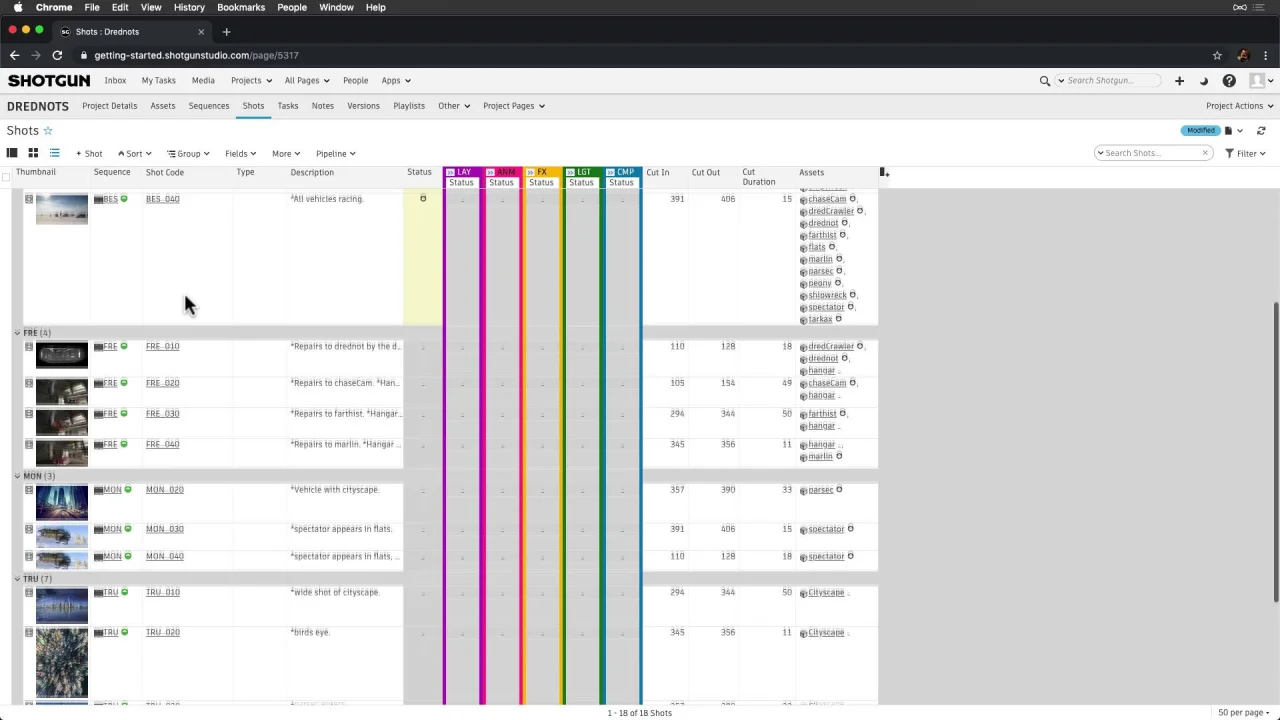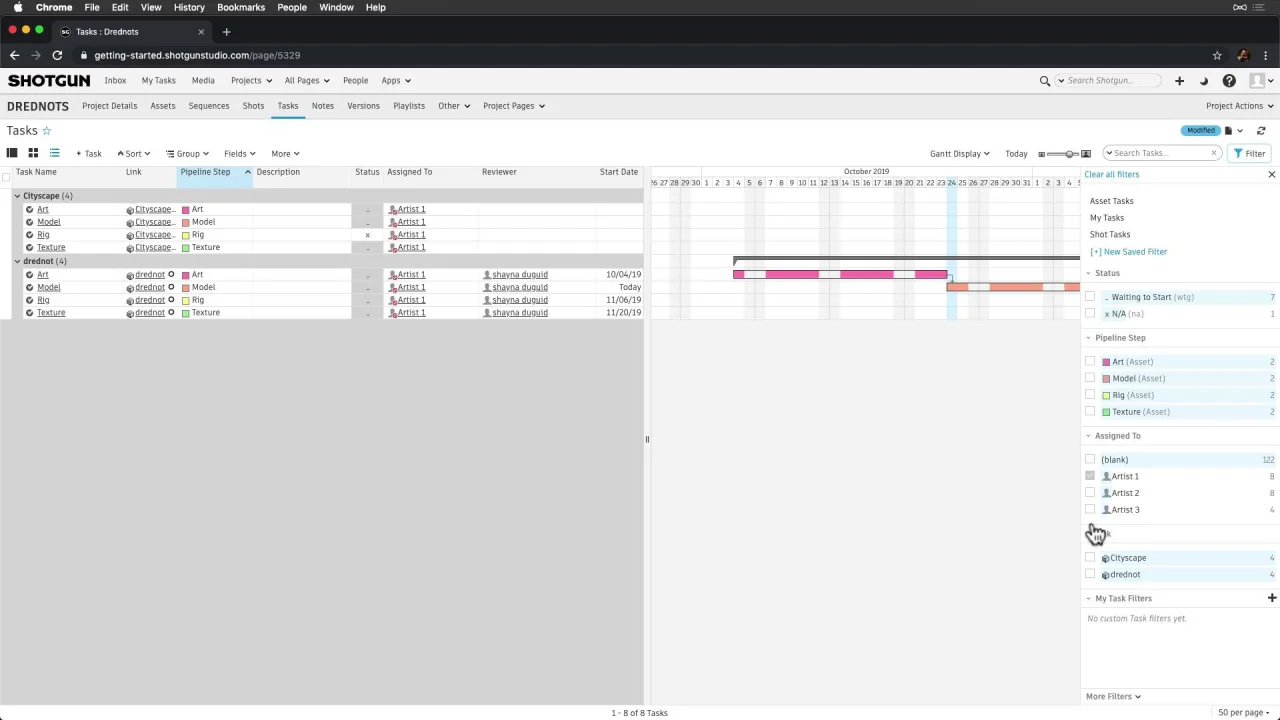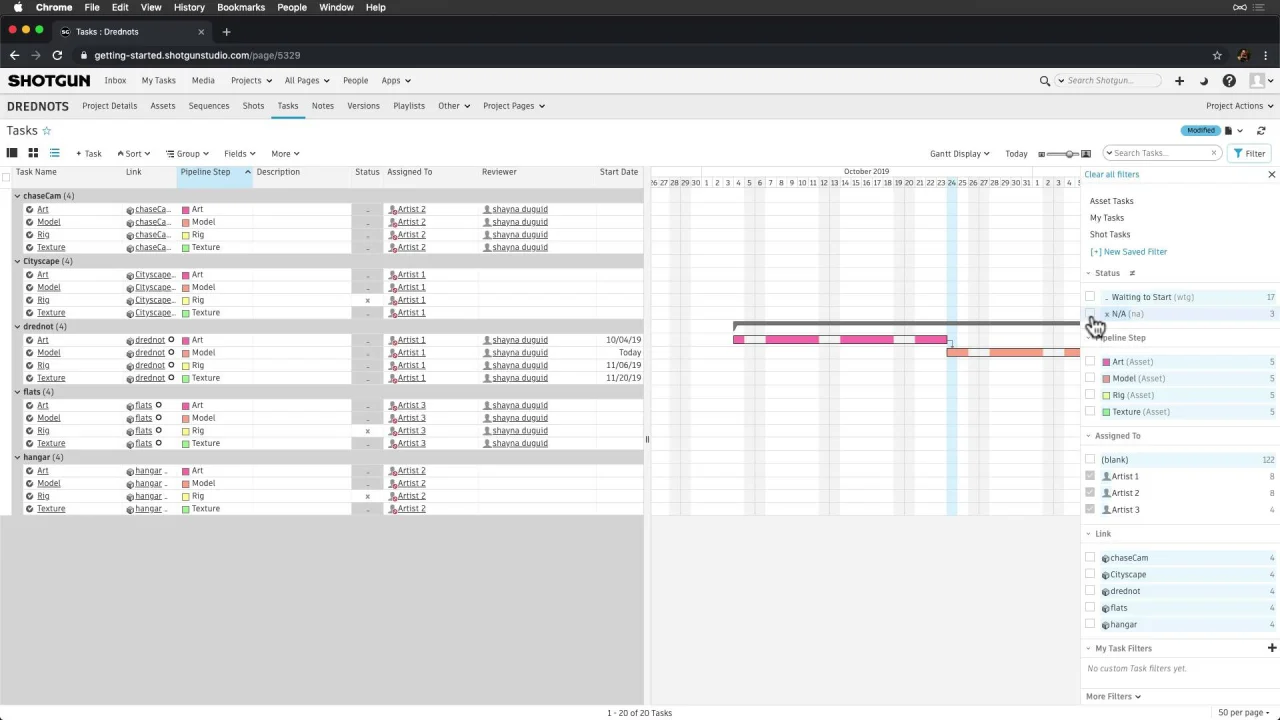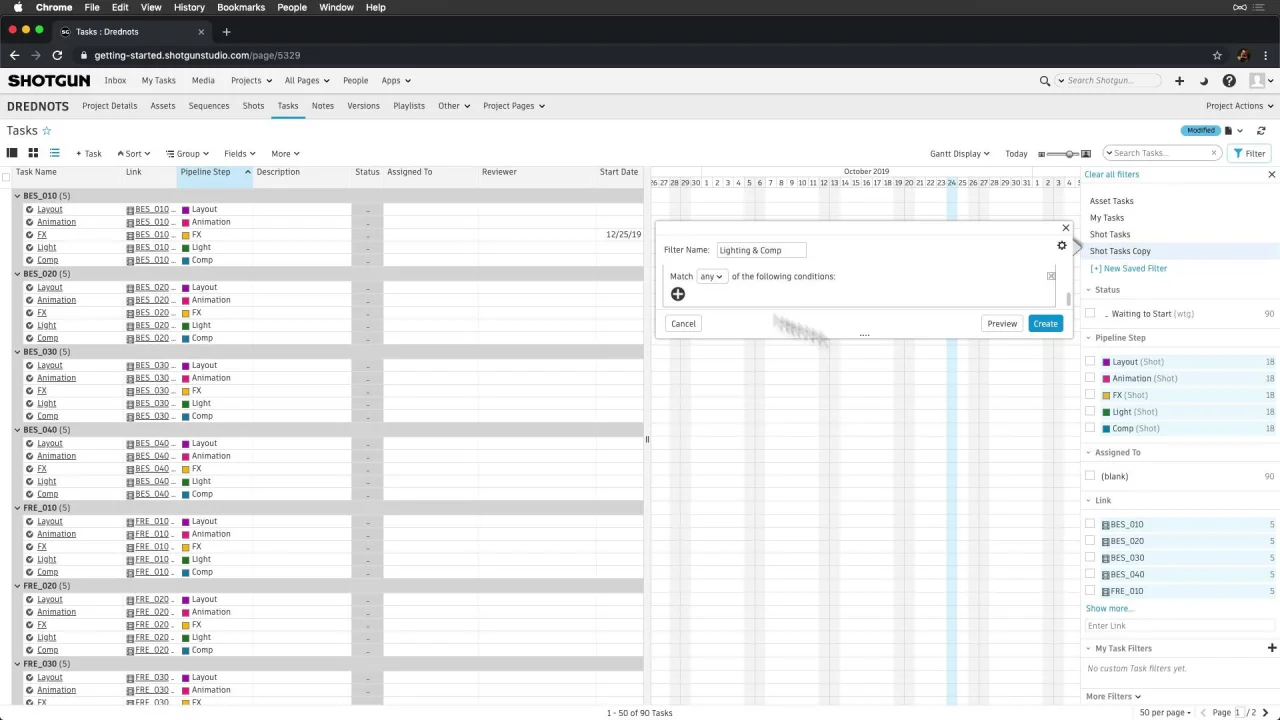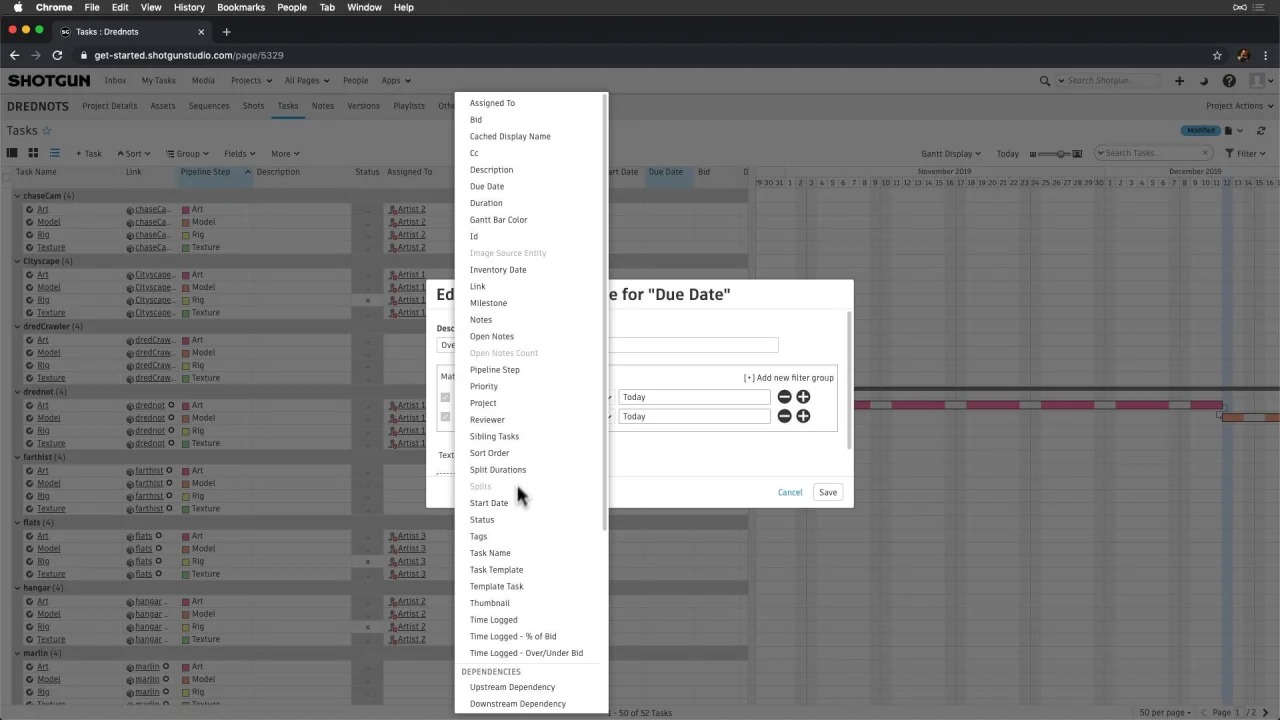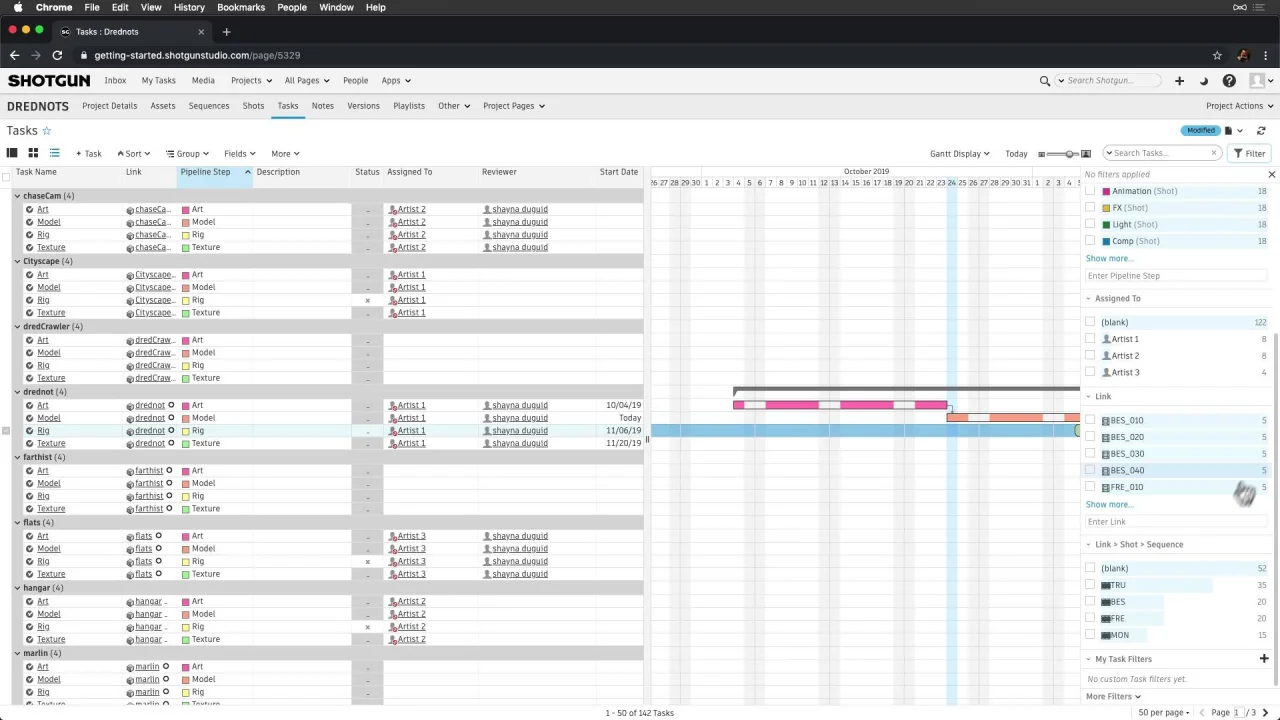Navigating your site as a Producer and Manager
Let’s focus on our workflow and how we navigate our data.
From our Assets page in Drednots, notice three views: Detail, Thumbnail, and List view.
In detail view, we can see all the information on an Asset, while thumbnail gives us a more visual view of each Asset with any fields we’d like to add.
When we make a change to the layout, like we’ve done by adding a field and wrapping the text, we’ll need to save the page so that everyone on our team can experience the same layout. The blue modified indicates that there are unsaved changes to a layout that are not permanent until we save the page.
If we adjust more ad-hoc, but prefer to keep the previously saved layout, we don’t have to do anything and layout will remain this way until we log out and then back in—meaning, unsaved changes can only be seen by the person who made them. And with unsaved changes, we can always revert to get back to the previously saved layout.
Also note that the selected view is a part of what is saved with the layout, so it will be the view we see first when visiting our Asset page.
In list view, we can see all of the information that we are tracking on each asset, and drill in further to Asset detail pages and see tasks, media, notes, and other information. Our Artists haven’t started work yet, but as soon as they start submitting media with Flow Production Tracking Create, RV or in the browser, we’ll see all the media here and can play it back through the browser. Then, we’ll start to see notes from everyone in the Notes tab too.
And we can navigate through Assets via our arrow keys, or select from the dropdown to navigate to another asset or asset type—so that we stay in context of these asset detail pages.
We can also navigate to a record using site search—which we can activate by pressing “q” on our keyboard.
On our Shots page, let’s group our data by the Sequence field. And then sort by the Cut Order field. This will help give us a more organized look of our Shots, in order, for Drednots, so let’s save the page so that everyone experiences this. When we’re looking for a particular record on a page, we can use the page search to look it up.
Heading to our Task page, let’s explore the filter panel and filter widgets. Filters can be applied in all views and it’s how we hone in on specific information. For instance, let’s expose the Assigned to filter widget, and filter for Tasks assigned to one person or multiple people. And let’s hold down the Command key on mac, or Ctrl key on Windows or Linux, when selecting multiple queries at once. This will prevent the page from refreshing until the key is released.
And to filter out certain information, we can activate ‘is not’ for any filter widget.
How can we automate displaying the information we need to see on pages? Flow Production Tracking ships with a number of page filters. We can update ones that already exist, duplicate to create similar ones, and create more that suit our workflow needs. Let’s create a page filter for Shot Tasks in Lighting and Comp, and save the page. Now when we visit our page, we’ll have a page filter for information we look up repeatedly.
Now that we’ve learned the basics for filtering information, let’s dive into making things stand out that are important—like Tasks that are overdue. By right-clicking on a column header, we can apply a conditional formatting rule for these Tasks that can be global—seen Flow Production Tracking-wide when this field is visible on a page—or, page specific like we’ll apply here. Let’s make the Task Due Date field bold with a shade of red to alert us the Task is overdue, then save the page. We can apply similar conditional formatting rules to rows.
We’ve determined that all Tasks in the MON sequence will be reviewed by a group of reviewers. Instead of updating each field manually, we’ll filter Shot Tasks by the MON sequence, then select all, and right-click on the field to assign the group of reviewers. Fast, right?
Now that we’ve learned the basics of navigation, we can apply this knowledge to all other pages and parts of Flow Production Tracking, streamlining our workflows, so we work with our team more efficiently.

